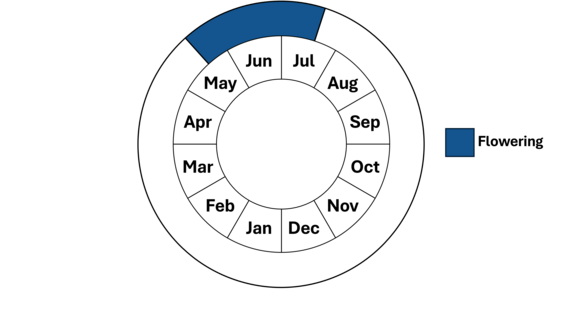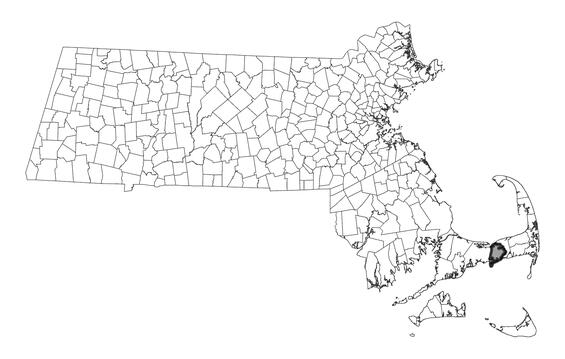- Scientific name: Neottia cordata
- Species of Greatest Conservation Need (MA State Wildlife Action Plan)
- Endangered (MA Endangered Species Act)
Description
Heartleaf twayblade is a very slender, perennial orchid with two (or sometimes four) opposite, heart-shaped leaves, 1-3 cm (0.5-1 in) long, which appear halfway up the single green stem. The flowers, which are arranged as a raceme, stand much higher than the leaves, the entire height of the plant being 10-20 cm (4-8 in). The flowers are small, 0.3 cm (0.1 in) across, light green to dusky purple, and have one slightly longer, linear, cleft petal called the lip. The flowers appear from late May to early July, which is the best time to identify this orchid. The name “twayblade” means “two-leaved,” as the plant usually only has two leaves on each stem.
White adder’s mouth (Malaxis brachypoda) and green adder’s mouth (M. unifolia) are similar, tiny orchids of coniferous swamps and forested fens, but they differ from heartleaf twayblade primarily in having only a single leaf.
Life cycle and behavior
This is a perennial species.

Population status
The Massachusetts Natural Heritage & Endangered Species Program has 6 records from 3 counties: Barnstable, Bristol, and Essex. One of these records has been observed within the last 25 years. It is listed as Endangered in Massachusetts. It is on the edge of its range here, and it exhibits a scattering of populations, though suitable habitat appears to be relatively common. This is typical of many plant species at the edge of their range.
Distribution and abundance

Distribution in Massachusetts
1999-2024
Based on records in the Natural Heritage Database
Habitat
Heartleaf twayblade occurs in wet, mossy, coniferous woods. The only Massachusetts site is an acidic swamp of Atlantic white cedar (Chamaecyparis thyiodes) with inkberry (Ilex glabra), sedges (Carex spp.), cinnamon fern (Osmunda cinnamonea), round-leaved.
Healthy habitats are vital for supporting native wildlife and plants. Explore habitats and learn about conservation and restoration in Massachusetts.
Threats
Conservation
References
Contact
| Date published: | May 6, 2025 |
|---|